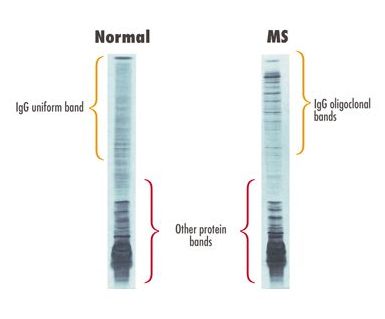What Color Is Spinal Fluid With Ms
A lumbar puncture is a diagnostic test for multiple sclerosis that involves removing and analysing a sample of cerebrospinal fluid (CSF), the fluid that surrounds the brain and spinal cord within the skull and backbone. It is sometimes referred to as a spinal tap.
A lumbar puncture takes about half an hour under a local anaesthetic. The lumbar region is the section of the backbone between the lowest ribs and the pelvis. A thin, flexible needle is inserted into the base of the spine above the pelvis and a quantity of cerebrospinal fluid is drawn off.
Having a lumbar puncture can be uncomfortable or unsettling. The drop in pressure in the cerebrospinal fluid caused by the removal of a sample can produce a splitting headache for some people. This usually lasts for no more than 24 hours but for some can persist for longer. To reduce the risk of headaches, you should try to lie flat for at least six hours after the procedure and drink plenty of water.
There is a lower risk of headaches and infections following lumbar puncture if the clinician uses a special atraumatic needle, sometimes called a Sprotte needle. These are not always commonly used, but they are recommended for use by the BMJ and you can ask if you are concerned.
How a lumbar puncture can help diagnose MS
The fluid that is drawn off in a lumbar puncture is analysed to look for a number of different things.
- White blood cells. If you have multiple sclerosis, then the number of white cells in your cerebrospinal fluid is usually up to seven times higher than normal. If the count is even higher than this, it is probably due to an infection of some sort, such as Lyme disease, and not MS.
- Neurofilaments. These are fragments of the structural support that normally surrounds your nerve axons. If neurofilaments are found in the CSF, then this is evidence that your myelin is under attack. If you have a subsequent lumbar puncture and fewer neurofilaments are found than before, this could be evidence that your disease-modifying drugs are effectively protecting the nerves.
- Oligoclonal bands. The immune system produces antibodies to fight infection. In MS, antibodies cross the blood-brain barrier and attack the myelin surrounding nerves. As a result, the level of antibodies in the cerebrospinal fluid of someone with MS is higher than it should be. It will also be higher than the level in the blood, so a blood sample will usually be analysed at the same time for comparison.
The test that shows the presence of antibodies is called electrophoresis. A sample of fluid is placed on a gel and voltage is applied. This causes antibodies of the same size to bunch together, forming visible 'bands'.
One band (monoclonal) in the cerebrospinal fluid is normal. The term 'oligoclonal bands' refers to the presence of two or more bands and shows the presence of disease activity. Whilst this doesn't necessarily mean that someone has MS, about 80-95% of people with MS do have oligoclonal banding in their cerebrospinal fluid.

References
- Oligoclonal bands in multiple sclerosis cerebrospinal fluid: an update on methodology and clinical usefulness. Journal of Neuroimmunology 2006;180(1-2):17-28. Summary
- Lechner-Scott J, et al. The frequency of CSF oligoclonal banding in multiple sclerosis increases with latitude. Multiple Sclerosis Journal 2012;18(7):974–982. Summary
- Davis A, et al Change practice now! Using atraumatic needles to prevent post lumbar puncture headache European Journal of Neurology 2014 21(2) 305-311 Summary
Print this page
Email this page
What Color Is Spinal Fluid With Ms
Source: https://mstrust.org.uk/a-z/lumbar-puncture